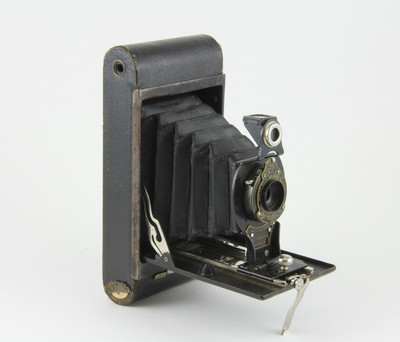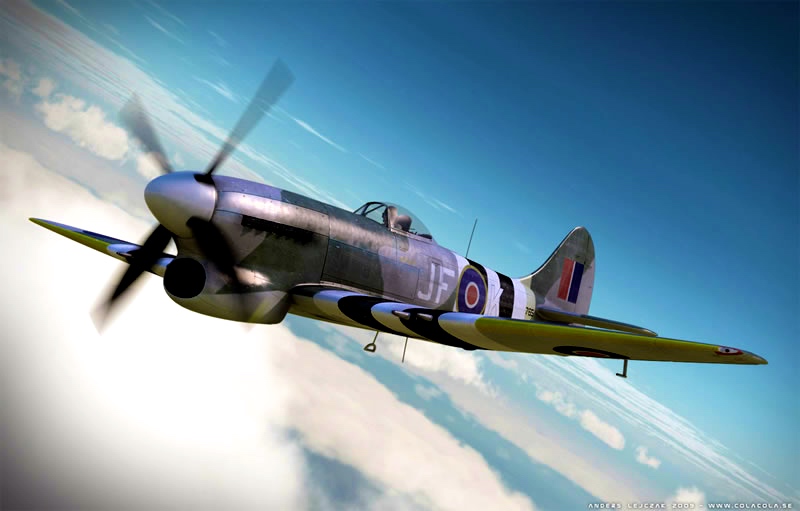NOTE: British author William Boyd has been WINNER of many literary prizes, including the Whitbread Award and the Costa Book Award. He was also SHORTLISTED for the IMPAC Dublin Award for Any Human Heart.
“I was thrown to the ground. I saw boots stamping on my camera, crushing it to pieces. I could hear police whistles, now, loud and shrill above the clamorous low baying of the mob in Maroon Street, and, ringed as I was by these young men standing above me, looking down on me, I could sense their uncertainty, their anxiety…They didn’t control the streets yet, these blackshirts, unlike the Nazis in Berlin – law and order still prevailed in London in a fragile way.” – Amory Clay, photographer, at the Maroon Street riot.
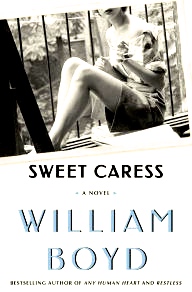 As fascists openly march the streets of London in 1936 and are confronted by ordinary citizens armed with frying pans, chair legs, spindles from banisters, pickaxe handles, stones, and even potatoes, photographer Amory Clay is there recording it all – until she is knocked unconscious. At age twenty-eight, she is now working quietly as a news photographer, her attempt to show the demimonde of 1936 Berlin through an art exhibition of naked prostitutes and their customers having been deemed by the police to be “A Vile and Obscene Display…Outrageous exhibitionism.” Her show, quickly closed, has left Amory a pariah, almost unemployable, though she did achieve her goal of showing that the Nazis’ “cleansing” effect on Berlin was a fraud.
As fascists openly march the streets of London in 1936 and are confronted by ordinary citizens armed with frying pans, chair legs, spindles from banisters, pickaxe handles, stones, and even potatoes, photographer Amory Clay is there recording it all – until she is knocked unconscious. At age twenty-eight, she is now working quietly as a news photographer, her attempt to show the demimonde of 1936 Berlin through an art exhibition of naked prostitutes and their customers having been deemed by the police to be “A Vile and Obscene Display…Outrageous exhibitionism.” Her show, quickly closed, has left Amory a pariah, almost unemployable, though she did achieve her goal of showing that the Nazis’ “cleansing” effect on Berlin was a fraud.
Famous for grand novels in which his characters try to digest what is happening around them while important world events unfold over an extended time frame, William Boyd has become a master of the genre, creating main characters who feel real as they and their families deal with the traumas they face over a long period of time, coming to new recognitions about life and themselves. In this new novel, William Boyd “breaks the rules,” taking the point of view of an ambitious woman who becomes a photographer the moment her father gives her a Kodak Brownie No. 2 for her seventh birthday in 1915.
Avoiding the usual traps of a man writing as a woman, Boyd creates a fine portrait of Amory Clay, a woman who defies the usual limitations placed on women in British society during the early and mid-twentieth century, showing her life as she travels to political hot spots and records major and minor events in the years after World War I, through World War II, postwar France, and Vietnam. She also associates with the aristocracy, literary lights, and artists and creates her own rules regarding her love life – and just about everything else. Neither beautiful nor brilliant, Amory relies on her own insights, talent, and sense of adventure to reveal hidden worlds through photography, not in the dramatic sense of revealing the horrors of battle and its destruction, but through those moments in the midst of crises in which people reveal their humanity and connect with others, including the reader.
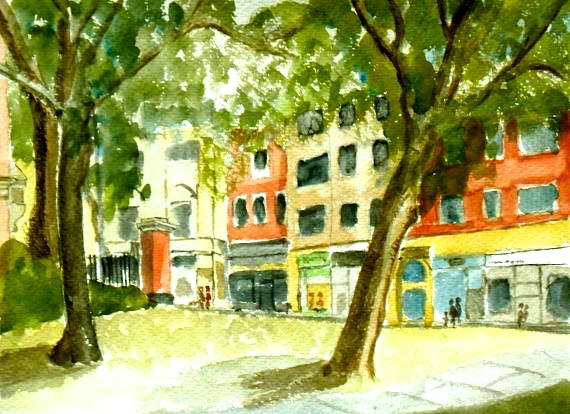
From 1934 – 1943, Amory’s official residence was London, overlooking Dovehouse Green in Chelsea. (Julian Lovegrove Art)
With a time line that extends for over seventy years, a main character whose photographic talents give her reason to be present at major European events, and a continuation of themes he has mined throughout his work – the present vs. the past as shown through our memories, our fictions, and our pretenses – William Boyd here adds photographs as lasting records of past events, showing the tiny details that our memories (and most authors) do not record – the facial expressions, the gestures, the common bonds shared by participants who will each take away a different memory of the same event. He has shown throughout his work his fascination with the art world – even, in Nat Tate: American Artist, inventing an artist, publicizing his work (all of which Boyd created himself), and displaying it in a New York gallery as part of an art hoax – and he has often incorporated real people who associate with his fictional characters within his novels. Here he uses these techniques to even finer effect, inserting references to the Prince of Wales, John Steinbeck, Marlene Dietrich, Irwin Shaw, and others, who appear at events involving Amory Clay, a technique which adds dramatically to the atmosphere of the novel though Amory herself is an observer who never meets or converses with these people. Her own reputation is enhanced when one of her photographs is compared with “Falling Soldier,” the most famous photograph of esteemed war photographer Robert Capa, who snapped his picture at the instant of a soldier’s death.
“Amory’s” photographs here, all “vintage” depictions of real people, lend a sense of poignancy. Boyd apparently collected these at yard sales, junk shops, and second hand stores, and as he uses these to make events and characters come alive in new ways, the reader/viewer cannot help but find his/her own emotions engaged as one wonders who these people – mothers, brothers, friends – really were, why their personal photos have been discarded, and what has happened to their own lives and dreams. They become the fictional characters of Boyd’s novel and add to it in new ways. Adding to the reader’s involvement with Amory Clay, her family, and her acquaintances, Boyd also alternates time periods throughout the novel. Each major section contains dates in the continuing development of Amory’s life and career, but each is also balanced throughout by selections from her “Barrandale Journal,” written from Scotland at the end of her life as she talks about being in her seventies and reminisces about the past.
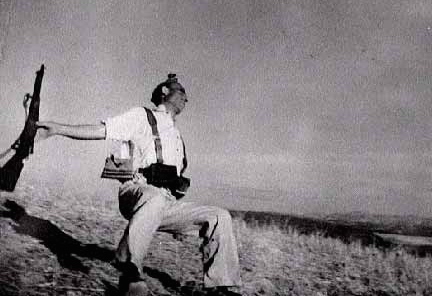
Robert Capa’s most famous photo, the “Falling Soldier,” the instant of a soldier’s death during the Spanish Civil War.
A novel of broad scope and interlocking characters, Boyd takes us from Amory’s father’s psychological traumas as a result of events during World War I to Amory’s husband’s issues during World War II, and her own family crises during World War II and its aftermath. Ultimately, she must decide, when her children are grown, whether to restart her career by going to Vietnam as a war photographer. The last part of the novel, in which Amory goes to California to try to find a missing daughter who has joined a commune, feels extraneous, though it does set up the conclusion, and I wish it were shorter or adapted in a way which would connect it more directly to the overall action. Still, this is vintage Boyd, and the new addition of photographs expands his ideas and provides a record of what really happens during events which our memories condense or exclude. Ultimately, the novel harks back to the quotation with which Boyd introduces the novel: “However long your stay on this small planet lasts, and whatever happens during it, the most important thing is that – from time to time – you feel life’s sweet caress.” Amory leads the way. (Jean-Baptiste Charbonneau, Avis de Passage, 1957)
ALSO reviewed here: ANY HUMAN HEART, NAT TATE: An American Artist, WAITING FOR SUNRISE, LOVE IS BLIND, TRIO
Photos, in order: The author’s photo by Kaya Burgess appears on http://www.thetimes.co.uk
The Kodak Brownie No. 2, about the size of an iPhone when closed, was available in 1915, and was Amory’s first camera, received when she was seven. http://www.nzmuseums.co.nz/
Amory spent most of her time from 1934 – 1943, living in Chelsea, overlooking Dovehouse Green, shown here as a painting by Julian Lovegrove Art https://www.pinterest.com/
This Typhoon fighter plane, like one piloted by Amory’s brother during World War II, may be seen with other classic planes here: http://dailynewsdig.com/classic-aircraft/
One of esteemed war photographer Robert Capa’s most famous photos was “Falling Soldier,” taken at the instant of the soldier’s death during the Spanish Civil War. One of Amory’s photos was compared to this in its impact. A story about it and its authentication may be found here: http://www.pbs.org/
ARC: Bloomsbury, BEA

